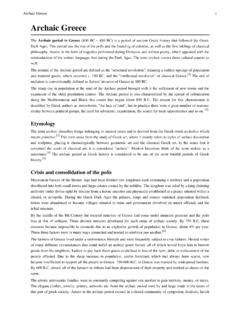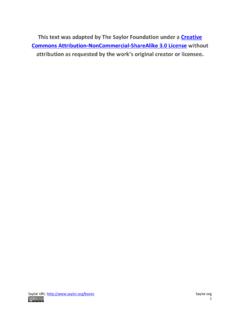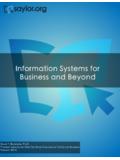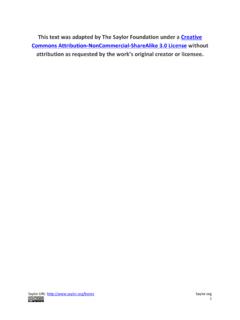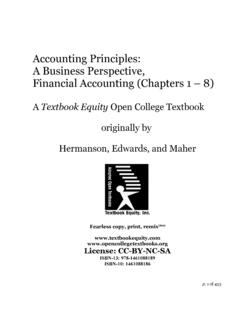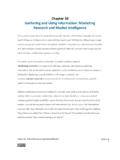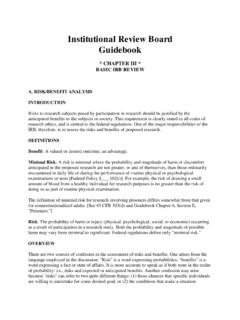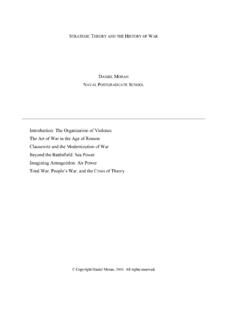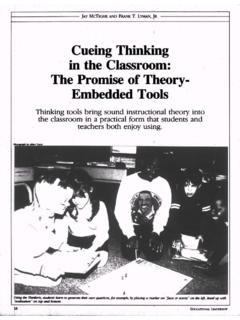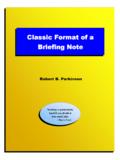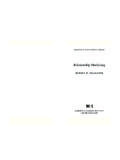Transcription of This text was adapted by The Saylor Foundation …
1 Saylor URL: 1 This text was adapted by The Saylor Foundation under a Creative Commons Attribution-NonCommercial-ShareAlike License without attribution as requested by the work s original creator or licensee. Saylor URL: 2 Preface Traditionally, intermediate-level international economics texts seem to fall into one of two categories. Some are written for students who may one day continue on in an economics PhD program. These texts develop advanced general equilibrium models and use sophisticated mathematics. However, these texts are also very difficult for the average, non-PhD-bound student to understand. Other intermediate texts are written for noneconomics majors who may take only a few economics courses in their program.
2 These texts present descriptive information about the world and only the bare basics about how economic models are used to describe that world. This text strives to reach a median between these two approaches. First, I believe that students need to learn the theory and models to understand how economists understand the world. I also think these ideas are accessible to most students if they are explained thoroughly. This text presents numerous models in some detail, not by employing advanced mathematics, but rather by walking students through a detailed description of how a model s assumptions influence its conclusions. Second, and perhaps more important, students must learn how the models connect with the real world.
3 I believe that theory is done primarily to guide policy. We do positive economics to help answer the normative questions; for example, what should a country do about its trade policy or its exchange rate policy? The results from models give us insights that help us answer these questions. Thus this text strives to explain why each model is interesting by connecting its results to some aspect of a current policy issue. A prime example is found in Chapter 11 "Evaluating the Controversy between Free Trade and Protectionism" of this book, which addresses the age-old question of whether countries should choose free trade or some type of selected protection. The chapter demonstrates how the results of the various models presented throughout the text contribute to our understanding of this long-standing debate.
4 Saylor URL: 3 Chapter 1 Introductory Trade Issues: history , Institutions, and Legal Framework Economics is a social science whose purpose is to understand the workings of the real-world economy. An economy is something that no one person can observe in its entirety. We are all a part of the economy, we all buy and sell things daily, but we cannot observe all parts and aspects of an economy at any one time. For this reason, economists build mathematical models, or theories, meant to describe different aspects of the real world. For some students, economics seems to be all about these models and theories, these abstract equations and diagrams. However, in actuality, economics is about the real world, the world we all live in.
5 For this reason, it is important in any economics course to describe the conditions in the real world before diving into the theory intended to explain them. In this case, in a textbook about international trade, it is very useful for a student to know some of the policy issues, the controversies, the discussions, and the history of international trade. This first chapter provides an overview of the real world with respect to international trade. It explains not only where we are now but also where we have been and why things changed along the way. It describes current trade laws and institutions and explains why they have been implemented. With this overview about international trade in the real world in mind, a student can better understand why the theories and models in the later chapters are being developed.
6 This chapter lays the groundwork for everything else that follows. The International Economy and International Economics L E A R N I N G O B J E C T I V E S 1. Learn past trends in international trade and foreign investment. Saylor URL: 4 2. Learn the distinction between international trade and international finance. International economics is growing in importance as a field of study because of the rapid integration of international economic markets. Increasingly, businesses, consumers, and governments realize that their lives are affected not only by what goes on in their own town, state, or country but also by what is happening around the world. Consumers can walk into their local shops today and buy goods and services from all over the world.
7 Local businesses must compete with these foreign products. However, many of these same businesses also have new opportunities to expand their markets by selling to a multitude of consumers in other countries. The advance of telecommunications is also rapidly reducing the cost of providing services internationally, while the Internet will assuredly change the nature of many products and services as it expands markets even further. One simple way to see the rising importance of international economics is to look at the growth of exports in the world during the past fifty or more years. Figure "World Exports, 1948 2008 (in Billions of Dollars)" shows the overall annual exports measured in billions of dollars from 1948 to 2008.
8 Recognizing that one country s exports are another country s imports, one can see the exponential growth in outflows and inflows during the past fifty years. Figure World Exports, 1948 2008 (in Billions of Dollars) Source: World Trade Organization, International trade and tariff data, Saylor URL: 5 However, rapid growth in the value of exports does not necessarily indicate that trade is becoming more important. A better method is to look at the share of traded goods in relation to the size of the world economy. Figure "World Exports, 1970 2008 (Percentage of World GDP)" shows world exports as a percentage of the world gross domestic product (GDP) for the years 1970 to 2008. It shows a steady increase in trade as a share of the size of the world economy.
9 World exports grew from just over 10 percent of the GDP in 1970 to over 30 percent by 2008. Thus trade is not only rising rapidly in absolute terms; it is becoming relatively more important too. Figure World Exports, 1970 2008 (Percentage of World GDP) Source: IMF World Economic Outlook Database, One other indicator of world interconnectedness can be seen in changes in the amount of foreign direct investment (FDI). FDI is foreign ownership of productive activities and thus is another way in which foreign economic influence can affect a "World Inward FDI Stocks, 1980 2007 (Percentage of World GDP)" shows the stock, or the sum total value, of FDI around the world taken as a percentage of the world GDP between 1980 and 2007.
10 It gives an indication of the importance of foreign ownership and influence around the world. As can be seen, the share of FDI has grown dramatically from around 5 percent of the world GDP in 1980 to over 25 percent of the GDP just twenty-five years later. Figure World Inward FDI Stocks, 1980 2007 (Percentage of World GDP) Saylor URL: 6 Source: IMF World Economic Outlook Database, ; UNCTAD, FDI Statistics: Division on Investment and Enterprise, The growth of international trade and investment has been stimulated partly by the steady decline of trade barriers since the Great Depression of the 1930s. In the post World War II era, the General Agreement on Tariffs and Trade, or GATT, prompted regular negotiations among a growing body of members to reciprocally reduce tariffs (import taxes) on imported goods.
